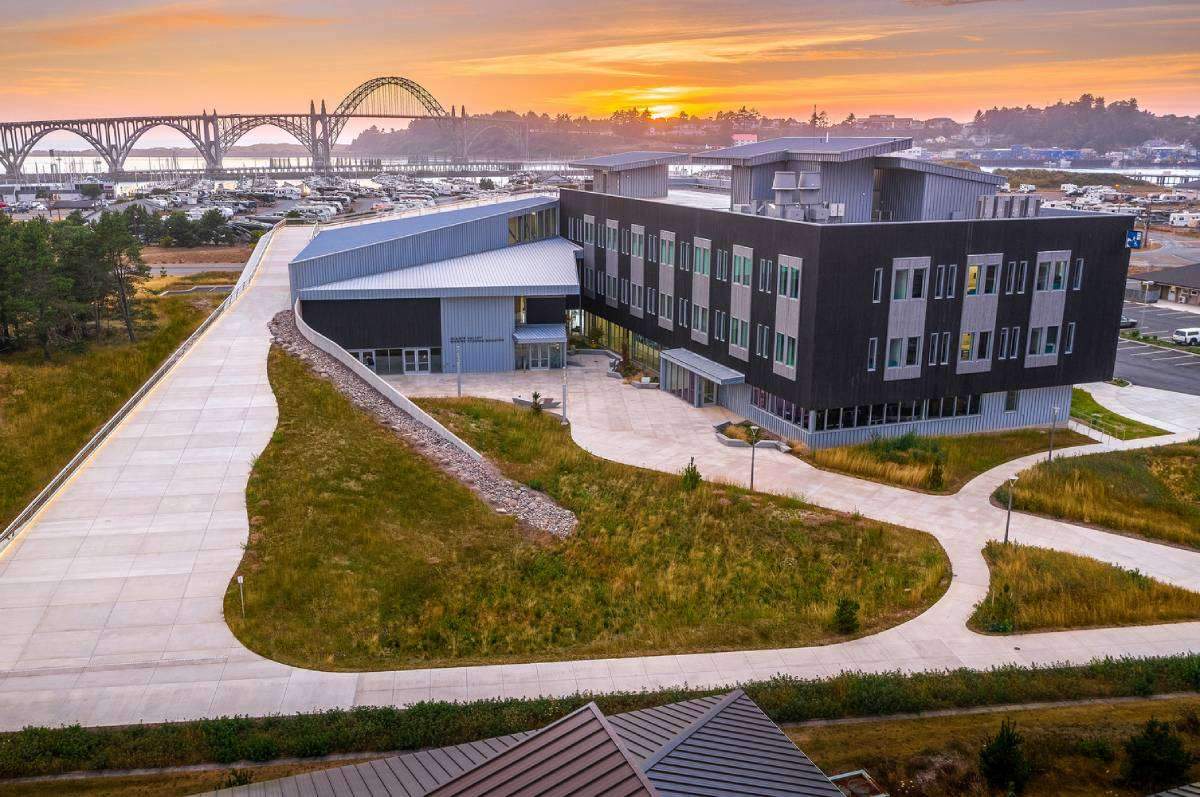Design of a marine research center that responds to tsunami waves
Last year, a flexible and sustainable center for marine sciences located in Newport was established,
the Hatfield Center for Marine Science.
The center, located at Oregon State University, is the marine studies initiative of a new,
interdisciplinary program of 11 colleges from Ohio State University.
The program aims to provide access to the sea for the university with its location on the waterfront.

Design Features
The project consists of two buildings, the three-storey Academic and Research Center,
a two-story community space, an auditorium and an innovation lab.
Collaborations connecting the two buildings with laboratories provide a new model for teaching and research,
and the university supports these programs with its new curricula that blend natural social sciences and serve users in an environment conducive to interdisciplinary discovery, collaboration, and expression.
The Marine Research Center was newly built, and recently we are witnessing an unprecedented rise in sea level.
The building achieves high resilience goals, as it uses advanced architectural and engineering techniques to serve as one of the first sites in the country as a vertical tsunami evacuation site.
The building can withstand a magnitude 9.0 earthquake,
and drives a ramp that carries people from the ground floor to the roof of the three-storey pavilion.
This was calculated using tsunami modeling software,
as this height was found to be sufficient for up to 900 users to be safe and on the flood line during a natural disaster.
The Architects’ Bureau organized “meet and mingle” events,
which allowed Newport residents to participate in the design.
Significant societal interest allowed the project team to define the guiding principles that guided the project throughout the design and construction phases.
Design guidelines ranged from programmatic principles to formal principles that reveal themselves in the final building.

Design of a marine research center that responds to tsunami waves
The building connects itself to its site and community through its colour, texture, material and even its art,
where exposed poured concrete provides strength and durability to the building and expresses the challenging conditions that the building must withstand.
Shou sugi ban siding and zinc cladding are familiar materials used in marine environments and carried throughout the exterior.
The site is connected to marine environments through the inclusion of native coastal vegetation,
while rainwater is collected across the slope and transferred to collection ponds around the site.
The building also achieves a high sustainable performance compared to its peers,
thanks to the use of heat recovery, and the building has reduced its EUI to 51% under the baseline code for its building type.
The Naval Studies Building not only represents Ohio State University’s determination for the Hatfield campus to be a place of innovation, research, and education.
This project also demonstrates responsibly building in tsunami inundation areas and designing a building rooted in its area’s history and culture.


 العربية
العربية
Pingback: Housing made of recycled materials - ArchUp
Pingback: Sharing experiences displaying Boxgram – ArchUp